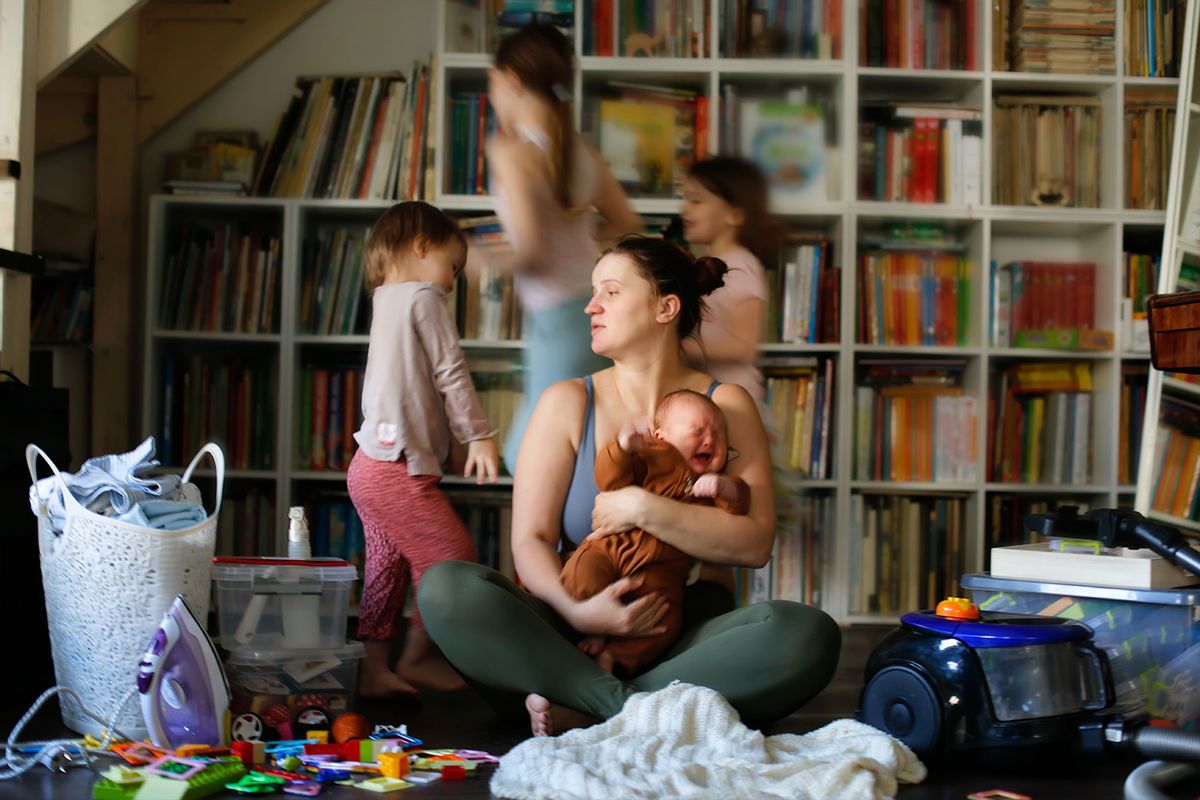Despite a new generation of fathers in straight marriages spending more time with their children, the majority of household and childcare work still falls on women. It’s not just the physical labor, but the mental load. Also known as cognitive labor, the term encompasses anticipating needs, planning, organizing and delegating household tasks.
Darby Saxbe, professor of psychology at the University of Southern California (USC), used an example of summer camp. The cognitive labor is researching camps, comparing rates, filling out the forms, and scheduling the camp week.
“All of the kind of organizational work versus, the daily work of taking the kid to and from camp,” Saxbe told Salon.
Cognitive labor has been at the forefront of public discourse for some time now, from Gemma Hartley’s viral article "Women Aren’t Nags; We’re Just Fed Up,” to Eve Rodsky’s book "Fair Play.” There is no shortage of discussion around the topic, but instead a lack of research — that is, until recently. Researchers, including Saxbe, at USC are one of the first to investigate the cognitive dimension of household labor and its effects on maternal mental health.
“We found that while mothers did more of the overall domestic labor than their partners, the division of cognitive labor was particularly gendered, such that women’s share of cognitive labor was more disproportionate than physical household labor,” the researchers wrote in the study, published in the journal Archives of Women's Mental Health. “We found that cognitive labor was associated with women’s depression, stress, burnout, overall mental health and relationship functioning.”
Mothers reported being responsible for about 73 percent of mentally demanding chores compared to their partners' 27 percent.
In the study, the researchers asked over 300 mothers of young children about who in their family was responsible for 30 common household tasks — such as calendar keeper, helping with homework, bathing and grooming, laundry and garbage. They then divided the tasks into cognitive planning and physical execution and to see how partners shared them.
The researchers found that mothers reported being responsible for about 73 percent of mentally demanding chores compared to their partners' 27 percent.
They also found that mothers took on 64 percent of physical tasks, while their partners managed 36 percent. The one task in which fathers did more planning and execution was taking out the garbage.
Want more health and science stories in your inbox? Subscribe to Salon's weekly newsletter Lab Notes.
Saxbe said there are a few reasons why cognitive labor could lead to poorer mental health outcomes among women, due in part that it is frequently “unrecognized.”
“I think a lot of heterosexual couples will say there's conflict around who's doing what at home and there's a sense from one partner that they need to be told what to do or be given directions,” she said. “And that's not an egalitarian division of labor. One person's giving you a list and saying, 'here are the things we need at the store,' and you're not sharing the vision of how you want your family to run.”
At the same time, Saxbe said, it’s a difficult issue to have conflict about because the labor isn't visible.
“The other partner may not even realize that so much is going on behind the scenes,” Saxbe said. “That there's so much thinking, planning and researching that goes into, say, summer camp or the after-school program.”
The person on the receiving end of cognitive labor may not realize how much time they're exhausting on it.
“They might just feel like stressed, but they may not realize it's because they're constantly doing all this household cognitive labor,” Saxbe said. “The other part of it is that it takes mental energy and focus away from other tasks, interests or priorities.”
We need your help to stay independent
If a partner is constantly running to-do lists of things that need to happen in the household, then they don’t have as much free mental space to to do other things.
Notably, the data was self-reported, and it only surveyed mothers within co-habitating heterosexual relationships. Still, the researchers believe there is much to learn from the data that could have a bigger social impact.
“The UN has tried to document unpaid care work and generally unpaid household labor as a really important kind of contributor to differences in women's economic potential,” Saxbe said, adding that so much of the economy is built on women’s unpaid labor but it’s not factored into the country’s GDP. “I think studies that see it as a valid thing to try to study and quantify can help just get us all talking about, ask what are we doing within our households, and how does that fit into the larger global picture for women and their health, happiness and earning potential.”



Shares